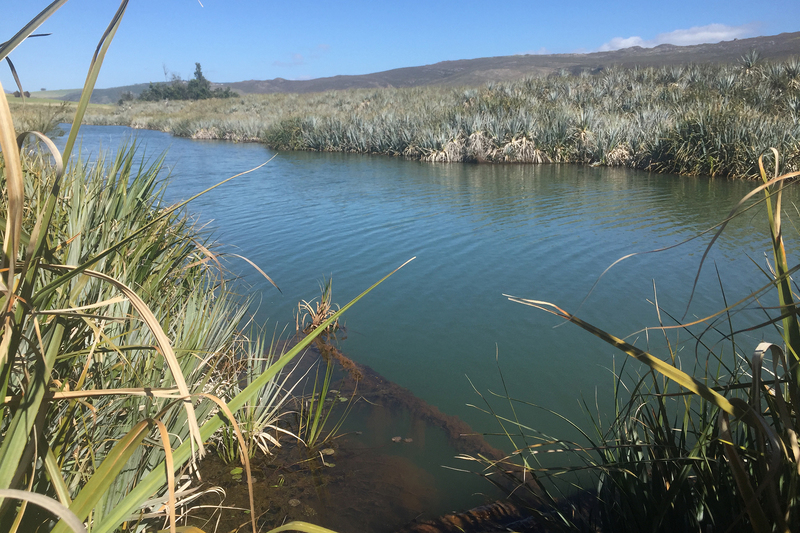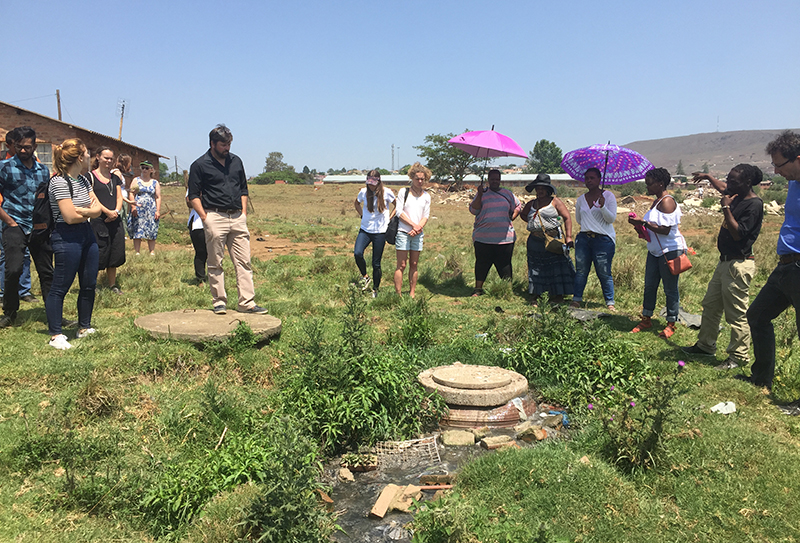Investing in climate-change protection
26 April 2019 | Story Jorisna Bonthuys. Photos Alanna Rebelo. Read time 6 min.
How do investments in ecological infrastructure protect society against hydroclimatic risks including droughts and floods? And to what extent does this kind of investment translate to livelihood benefits and social upliftment?
These are the kind of questions that scientists from a transdisciplinary research team are now trying to answer. The team includes hydrologists, ecologists, climate scientists and livelihood experts from the African Climate and Development Initiative (ACDI) at the University of Cape Town (UCT), as well as from Stellenbosch University, the University of KwaZulu-Natal, the University of Copenhagen (Denmark), and the private firms Aurecon and Ekosource.
Ecological infrastructure – nature’s capital stock – provides a valuable range of ecosystem services from which humans benefit. In terms of water security, these include water purification, flood attenuation and drought mitigation.
Investment in this kind of infrastructure includes clearing invasive alien vegetation like pine trees and black wattle from mountains, rivers and wetlands, wetland rehabilitation (restoring indigenous vegetation or building gabions and weirs to halt erosion), as well as building artificial wetlands.
Dr Nadine Methner, a research fellow at UCT’s ACDI, is the project coordinator of the Socio-Economic Benefits of Ecological Infrastructure (SEBEI) project.
Nature’s capital stock
“We are looking at the benefits [of investing in water-related ecological infrastructure] from multiple dimensions, including direct jobs created, downstream beneficiaries, indirect social benefits, ecological benefits, avoided costs, and the reduction of hydroclimatic risks,” she explained.
“We are looking at the benefits [of investing in water-related ecological infrastructure] from multiple dimensions, including direct jobs created, downstream beneficiaries, indirect social benefits, ecological benefits, avoided costs, and the reduction of hydroclimatic risks.”
The SEBEI project is jointly coordinated by ACDI and the Department of Geosciences and Natural Resource Management at the University of Copenhagen. The project is funded by the Ministry of Foreign Affairs of Denmark (DANIDA).
While there have been many studies focusing on the water-related benefits of investment in ecological infrastructure, including invasive alien tree clearing projects, this particular one focuses on building an evidence-based case of hydrological and socio-economic benefits linked to water-related ecological infrastructure investments. This will inform an investment framework and investment cases for different types of investors.

South Africa is considered a water-scarce country, with rainfall distributed unevenly across the landscape and over time. To strengthen its water security, South Africa needs investment in water-related ecological infrastructure, especially under conditions of climate change, increasing population growth and land degradation, Methner stressed.
Most of the cost-effective, hard infrastructure options such as large-scale dams and pipeline schemes have been exploited in key catchment areas, with planners historically relying heavily on such engineering solutions to secure the country’s water security. Climate change is also shifting rainfall patterns, causing increases in temperatures and accelerating the risks of extreme weather events across the country. Even in the best-case scenario, South Africa, like the rest of the region, is expected to become more vulnerable to water insecurity in the coming decades. This increases the urgency of implementing the best and most cost-effective and effective adaptation plans, including those related to ecological infrastructure.
Cost-effective adaptation plans
“Clearly, new approaches and solutions to water resource management are needed to move beyond the limits of traditional engineered infrastructure,” Methner said.
“For South Africa, one of these promising solutions is the investment in ecological infrastructure.”
“For South Africa, one of these promising solutions is the investment in ecological infrastructure. This can either become a cost-effective measure on its own or, depending on the context, be used in combination with hard infrastructure.”
An ecological infrastructure approach has already had some success in securing a reliable water supply to growing cities with quality and supply-demand constraints in other parts of the world, such as Sydney, Seattle and New York.
To support decisionmaking for this type of investment, the researchers are following a transdisciplinary approach. On the one hand, they are using fine-scale, validated hydrological modelling coupled with high-resolution remote sensing inputs to quantify the water-related benefits of investing in ecological infrastructure. On the other, they are investigating the benefits to livelihoods and well-being of intended beneficiaries, including workers, landowners, local communities, dominant agricultural value chains, municipalities, and downstream water users.
They are working at six primary study sites in the Berg-Breede (Western Cape) and uMngeni (KwaZulu-Natal) catchments. These catchments contain strategic water source areas upstream, and support major metropolitan cities (Cape Town and Durban) downstream. Both catchments are under severe pressure from rising water demands and deteriorating water quality.
Methner explained that the team is working with different types of public and private investors. By combining the evidence base of ecological and socio-economic benefits in ways that satisfy the needs of different types of potential investors, they want to develop a range of prototype investment “products”.
“We hope our work will help to leverage new investment, as well as upscale existing investment in ecological infrastructure to find innovative and affordable ways to achieve water security in the country,” she said.
 This work is licensed under a Creative Commons Attribution-NoDerivatives 4.0 International License.
This work is licensed under a Creative Commons Attribution-NoDerivatives 4.0 International License.
Please view the republishing articles page for more information.
Research & innovation





































